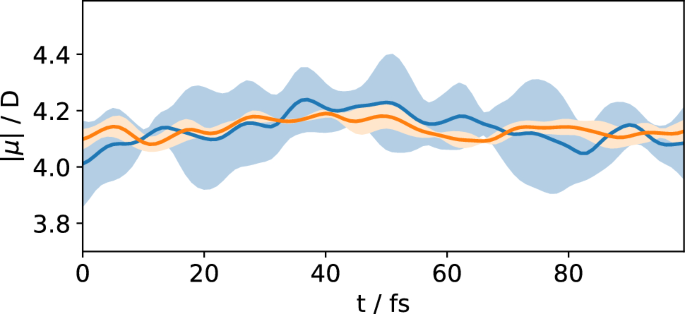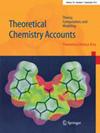A trajectory surface hopping study of the vibration-induced autodetachment dynamics of the 1-nitropropane anion
IF 1.5
4区 化学
Q4 CHEMISTRY, PHYSICAL
引用次数: 1
Abstract
Abstract In this study, we investigate the autodetachment dynamics of the 1-nitropropane anion after vibrational excitation of the energetically lowest C–H stretching mode using our recently developed extended quantum classical surface hopping approach including the detachment continuum. Therein the detachment from an electronic bound anion state is treated as a nonadiabatic transition into discretized detachment continuum states for an ensemble of classical nuclear trajectories propagated on quantum mechanical potential energy surfaces. The initial ensemble is obtained by sampling a phase space distribution accounting for the vibrational excitation of the C–H stretching mode of the molecule to match the experimental conditions. The simulated kinetic energy distribution of the ejected electrons reproduces characteristic features of the available experimental data. Analysis of the nuclear dynamics points out that the approach to neutral-like geometries with decreased pyramidalization angle of the NO $$_2$$

1-硝基丙烷阴离子振动诱导自脱离动力学的轨迹表面跳变研究
在本研究中,我们使用我们最近开发的扩展量子经典表面跳变方法,包括分离连续体,研究了1-硝基丙烷阴离子在能量最低的碳氢键拉伸模式振动激发后的自脱离动力学。其中,从电子束缚阴离子状态的脱离被视为在量子力学势能表面上传播的经典核轨迹系综的离散脱离连续态的非绝热跃迁。通过采样考虑分子C-H拉伸模式振动激发的相空间分布,得到初始系综,以匹配实验条件。模拟得到的抛射电子的动能分布与现有实验数据的特征基本一致。核动力学分析指出,减小NO $$_2$$ 2基团的锥体化角和减小N-O键的长度是促进1-硝基丙烷超快自脱离过程的关键因素。当阴离子的偶极束缚的第一激发态被填充时,这是促进的,它在结构上类似于中性系统。虽然只观察到这种状态的一小部分瞬态人口,但它作为分离连续体的有效入口,并负责大量的弹出电子。
本文章由计算机程序翻译,如有差异,请以英文原文为准。
求助全文
约1分钟内获得全文
求助全文
来源期刊

Theoretical Chemistry Accounts
化学-物理化学
CiteScore
3.40
自引率
0.00%
发文量
74
审稿时长
3.8 months
期刊介绍:
TCA publishes papers in all fields of theoretical chemistry, computational chemistry, and modeling. Fundamental studies as well as applications are included in the scope. In many cases, theorists and computational chemists have special concerns which reach either across the vertical borders of the special disciplines in chemistry or else across the horizontal borders of structure, spectra, synthesis, and dynamics. TCA is especially interested in papers that impact upon multiple chemical disciplines.
 求助内容:
求助内容: 应助结果提醒方式:
应助结果提醒方式:


